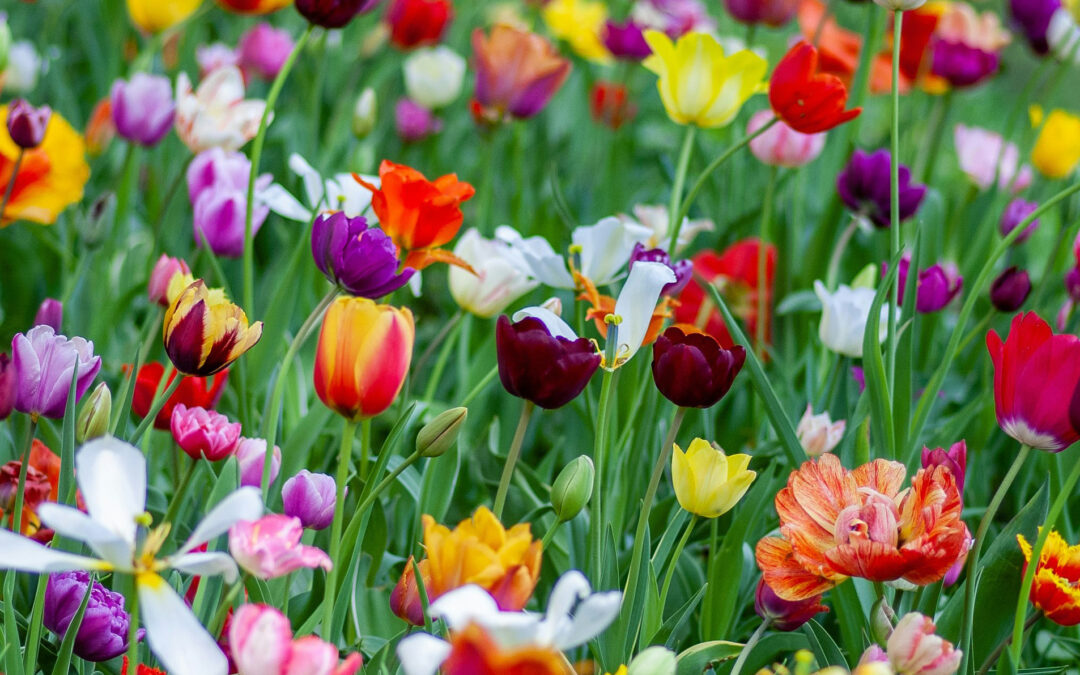Spring is just around the corner and the greys, browns, and whites will soon give way to vibrant foliage and a whole range of colors in spring blooms. While everyone wants a garden filled with color and fragrance, the amount of time and money involved in maintaining a lush rose garden or bountiful annual flowering plants can be more than many of us want to invest. So how does the average homeowner balance maintaining a beautiful landscape and get the kids to soccer practice and laundry done while not eating take out every night? This is where a landscape including more native biomes and plant selections can help. While we all love the splendor of a hydrangea and its giant colorful blooms or the early spring color of rhododendrons, they can require more specific conditions in the type of soil and amount of sun as well as being less tolerant of our heavy rains and long periods of drought and heat. A good alternative is one of the many types of Viburnums that are either native to our area or closely related to native species. For example, the Blackhaw Viburnum native to eastern Kansas and most of Missouri will thrive in most soil types and be very tolerant of the more extreme swings in our weather patterns, as well as providing vibrant blooms and winter food for birds. The level of care and maintenance is vastly lower, only requiring a trim to maintain the size and shape desired as well as being more resistant to pests and diseases in our area. Native grasses are also a wonderful low maintenance solution to help fill out a landscape bed or provide some additional screening. Little Blue stem is an attractive native grass to add to most landscape beds with its striking color and winter interest. It is known for its adaptability which has helped it thrive for millennia in the prairies of Kansas.
Many of the native or native adjacent plants that thrive in our environment do so because of deep penetrating root structures. This allows them to access water from deeper sources and makes them less dependent on irrigation during our hot summer months. They are a great way to lower your water consumption and help alleviate cost and maintenance in maintaining an attractive landscape. However, compacted soils from poor cultivation practices such as continual watering of turf, can keep the root structures from penetrating the soil and creating channels for rainwater to soak deeper into the ground. Instead of our torrential rains of spring soaking in and creating a bank for deep roots to draw from, the rainwater runs off the compacted soil giving little benefit to your landscape and contributing to flooding issues around the home and in our creeks and streams. One solution is applying Humic Acid. Extracted from natural origins, Humic Acid helps break up compacted clay soils and make trace nutrients more available to the roots of our landscape plants. There are many methods of application, at 4T Total Lawn we utilize an injection method that can be applied to landscape beds and turf as desired. The results are healthier plants with deeper root structures which over time create even more room for rainwater to penetrate the soil deeper, an all-around win!
Speaking of turf, let’s talk about why we need so much of it!? While an expansive sea of green has its appeal, what about mixing in a wildflower patch? All of the benefits listed above also apply to converting a section of turf to Midwest Native Wildflower patch. From providing food sources to our dwindling pollinator populations such as bees and butterflies and winter food crop for birds, to soaking up more of those torrential rains helping to alleviate flooding. Another benefit is lower maintenance! Believe it or not, Native Wildflower patches have proven to be less maintenance and water requirement than the same square footage of turf! And the best benefit of all, fresh cut flowers all season long. Burn or cutback in the spring, an overseed every third year, and a little weeding here and there is all the regular maintenance that’s required.
While we are on the subject of bed maintenance, let’s talk mulch and compost. A common misconception about mulch is that you add to it once a year and you’re set, this can create compacted mulch layers with detrimental fungal growth and decrease water absorption. Once your mulch begins to break down from last year, the weed seeds that accumulated over the last year have freshly composted mulch to germinate in, inadvertently creating the perfect weed garden. It is recommended to remove old mulch at a minimum of every 3rd or 4th year, and either take to a recycling facility to be composted or give us a call to do it for you. On the subject of compost – when cleaning out that old mulch, why not add some organic compost to amend the soil? Through the years trees, shrubs, and perennials can deplete the soil of nutrients, and due to the lack of wildlife digging and scraping in the soil it can also become compacted at the surface. Hard raking or tilling in an inch of compost can really bring the soil back to life and your landscape plants will have healthier foliage and more blooms!
All of these steps listed above can lead to a more sustainable and eco-friendly landscape as well as lower maintenance and annual costs. Whether you’re looking to lower your landscape cost and maintenance, improve its biodiversity, add some color and help out our pollinators, or just get that pesky mulch job completed, 4T Total Lawn is here to help with all your landscape/hardscape needs.

